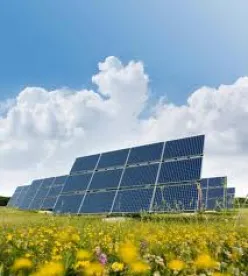On February 25, 2015, the European Commission presented three communications on:
-
a Framework Strategy for a Resilient Energy Union with a Forward-Looking Climate Change Policy;
-
Achieving the 10% Electricity Interconnection Target: Making Europe’s Electricity Grid Fit for 2010; and
-
The Paris Protocol: A Blueprint for Tackling Global Climate Change Beyond 2020.
These three Communications build upon the EU’s Agreement on the Framework for Climate and Energy and the Commission’s Communication on a European Energy Strategy and lay out the new Commission’s goals and strategies on energy and climate change for the next years.
The Communication on the Paris Protocol also presents an ambitious proposal for a protocol to the United Nations Framework Convention on Climate Change (UNFCCC) that, according to the European Commission, should cover all sectors and ensure a long term goal of reducing global emissions by 60% below 2010 levels by 2050. The fact that the Commission presented its proposals for an international climate change deal in Paris in December 2015 together with its vision for a European Energy Union highlights the interrelation between Europe’s energy and climate change policies and the extent to which Europe’s international climate change strategy is defined by its need to reduce its foreign energy dependency.
A European Energy Union
A reinforced European Energy Union is one of the main objectives and action items of the new Juncker’s European Commission. According to the Commission, this Energy Union should be based on the objectives of ensuring energy security of supply, sustainability and competitiveness, so that Europe “move[s] away from an economy driven by fossil fuels, an economy where energy is based on a centralized, supply-side approach and which relies on old technologies and outdated business models.”
To achieve these objectives, the Commission proposes an Energy Union Strategy with a long list of initiatives that fall into five interrelated dimensions. While these initiatives have been presented as “the most ambitious European energy project since the Coal and Steel Community,” in effect many of them implement or reinstate prior Commission commitments. Moreover, to a large extent the EU will only implement the proposed initiatives if Member States are willing to cooperate as the EU has no exclusive competence in energy policies and many decisions in this area must be taken by unanimity.
Energy Security, Solidarity and Trust. The Commission announced the following measures among others to complete the internal market, diversify energy supply and ensure a more efficient energy consumption:
-
Take measures to ensure that Member States fully implement the 3rd Internal Energy Market Package and strictly enforce the competition rules of the EU Treaties in the energy sector.
-
Propose a resilience and diversification package for gas in 2015-2016.
-
Prepare a comprehensive strategy for liquid natural gas and its storage. Among other things, the Commission will work to remove obstacles to LNG imports from the US and other countries.
-
Develop access to alternative gas suppliers, including from the Southern Gas Corridor Route, the Mediterranean and Algeria.
-
Propose legislation in 2016 to allow the Commission to review energy (g., gas) Intergovernmental Agreements (between Member States and third countries) before such agreements are negotiated, involve the Commission in the negotiations, and develop standard contract clauses. This may have a significant impact on Member States’ energy supply negotiations with Russia and other third countries.
-
The Commission also made clear its position that producing shale gas and other unconventional oil and gas in Europe is an option “provided that issues of public acceptance and environmental impact are adequately addressed.”
A Fully Integrated Energy Market. The European Commission argues that the current design of the electricity market does not lead to sufficient investments, market concentration and market competition. To address these failures and complete the electricity internal market, the Commission announced the following measures:
-
Propose legislation on the security of supply and a new market design for electricity in 2016.
-
Produce reports on energy prices, analyze the role of taxes, levies and subsidies in the energy market and seek the phasing out of regulated energy prices below cost.
-
The Communication on Achieving the 10% Electricity Interconnection Target announces the Commission’s intention to promote the implementation of infrastructure projects that will ensure a 10% electricity interconnection target by 2020 and to propose measures to reach a 15% interconnection target by 2030. Currently 12 Member States do not reach the 10% interconnection target. The Commission estimates that around €40 billion will be needed to reach 10% target by 2020. In effect, the 10% interconnection target reflects the EU’s lost decade in this area due to the resistance of some Member States to cooperate.
Energy Efficiency As a Contribution to the Moderation of Energy Demand. The Commission sticks to the European Council’s indicative target at the EU level of at least 27% for improving energy efficiency by 2030 with the commitment to review this target by 2020 having in mind an EU target of 30%. To achieve these targets, the Commission announced the following policy measures and revisions of EU legislation:
-
Review and propose the necessary amendments to EU energy efficiency legislation in 2015 and 2016 to ensure the 27% energy target by 2030.
-
Propose a strategy to facilitate investment in heating and cooling.
-
Develop a Smart Financing for Smart Buildings initiative to allow access to funding for making existing buildings more energy efficient.
-
Propose a road transport package promoting more efficient pricing of infrastructures, the deployment of intelligent transport solutions and enhancing energy efficiency in transport.
-
Create the right market conditions for the deployment of alternative fuels, and to encourage the procurement of clean vehicles, including electric vehicles.
Decarbonization of the Economy. To achieve the EU’s goal to reduce its emissions by 40% by 2030 compared to 1990, the Commission announced the following measures concerning the revision of the EU Emissions Trading System and the EU renewable energies framework. In its Communication on the Paris Protocol: A Blueprint for Tackling Global Climate Change Beyond 2020, the Commission also laid out the international dimension of its climate change objectives (see below).
-
Propose legislation amending the EU Emissions Trading System Directive. Among other things, the proposed amendment should increase the linear reduction factor to 2,2 as of 2021 and address carbon leakage.
-
Ensure an agreement on national targets for sectors not included in the EU Emissions Trading System Directive, which should also cover the land and forestry sectors.
-
Propose new renewable energy legislation in 2016-2017 that should also include a new policy for sustainable biomass and biofuels and rules to ensure that the 27% renewable energy target for 2030 is met in a cost efficient way. This legislation must also ensure that energy markets and grids are fit for renewable energies.
Research Innovation and Competitiveness. The Commission also announced a series of initiatives to develop a forward-looking energy and climate-related research and innovation strategy to encourage European technological leadership and expand export opportunities.
The Commission’s Vision on the Paris Protocol on Climate Change
In its Communication on the Paris Protocol: A Blueprint for Tackling Global Climate Change Beyond 2020 the European Commission presents its vision for a protocol to the UNFCCC that should be agreed on at the COP 21 of the United Nations Framework Convention on Climate Change in Paris in December 2015. According to the Commission, this Protocol should:
-
Specify a long term goal to reduce global emissions by at least 60% below 2010 levels by 2050.
-
Impose binding mitigation commitments on all parties, other than Least Developed Countries.
-
Require emission reductions in all sectors, including agriculture, forestry and other land uses, international aviation and shipping and fluorinated gases.
-
Enter into force as soon as countries with a collective total of 80% of current global emission have ratified it.
-
Include robust rules on monitoring, reporting, verification and accounting and process for holding each party accountable for achieving its commitments.
-
Set out a process applicable to all contracting parties to regularly review and strengthen commitments in accordance with the long term goals of the protocol. This review should facilitate transparency and be repeated every five years starting in 2020.
-
Reinforce the comments of all parties to continue to formulate, plan and implement measures to facilitate adaptation and to report on these measures through their national communications.
-
Encourage all countries to participate in climate finance, technology development and transfer and capacity building, in addition to emission reduction commitments.
The Communication also announces the Commission’s intention to present the EU’s Intended Nationally Determined Contribution (“INDC”) during the first quarter of 2015. This INDC should reflect the EU’s commitment to reduce its emissions by 40% by 2030 compared to 1990 levels. The Communication also suggests that the EU would not propose a higher conditional target and that if the outcome of the negotiations warrant a more ambitious target, the EU would be open to the use of international credits to complement domestic commitments, provided that their environmental integrity is secured and double counting is avoided.
The Communication also calls on G20 countries, in particular the United States and China, to present ambitious INDCs by the first quarter of 2015.




 />i
/>i
